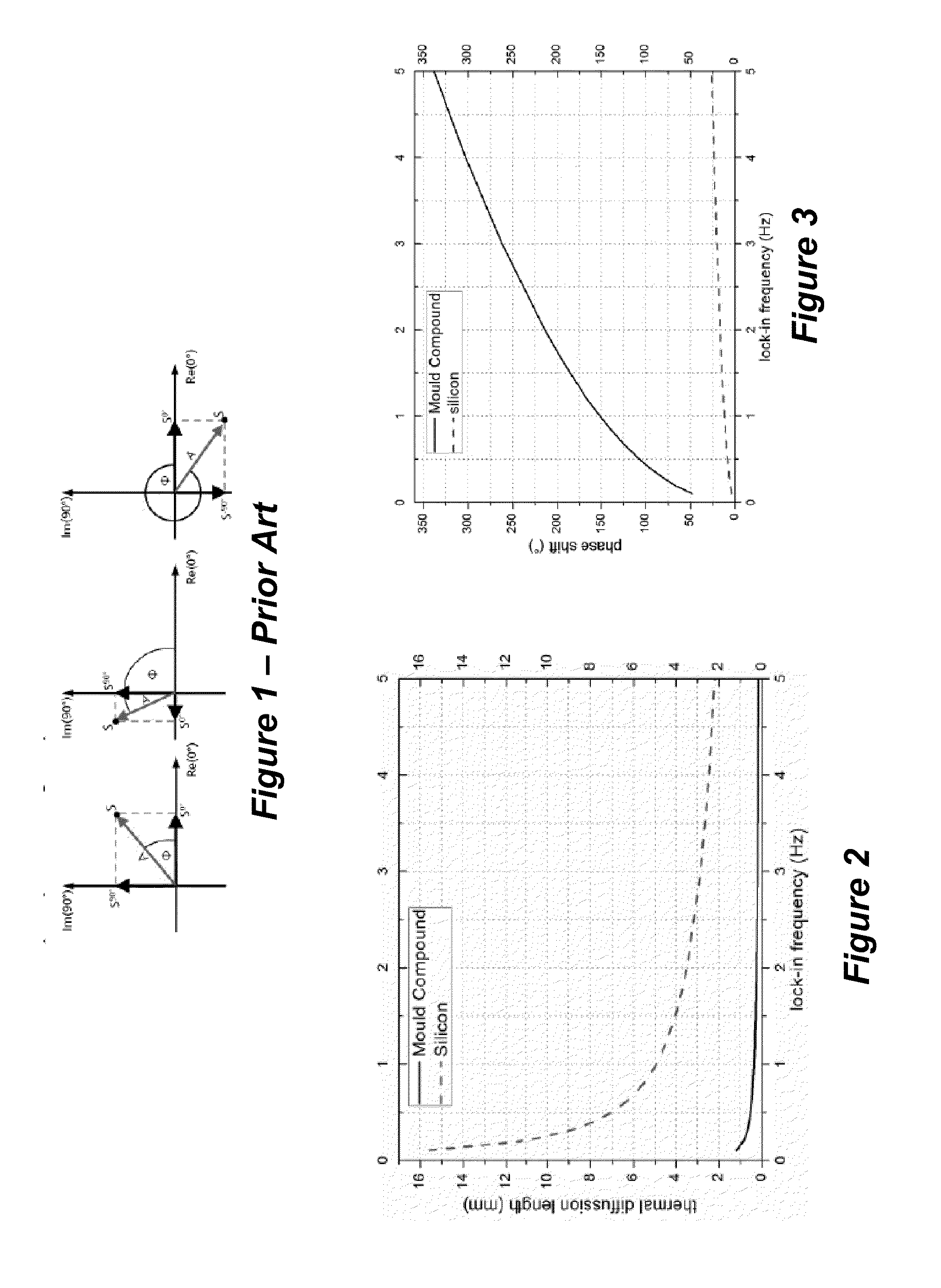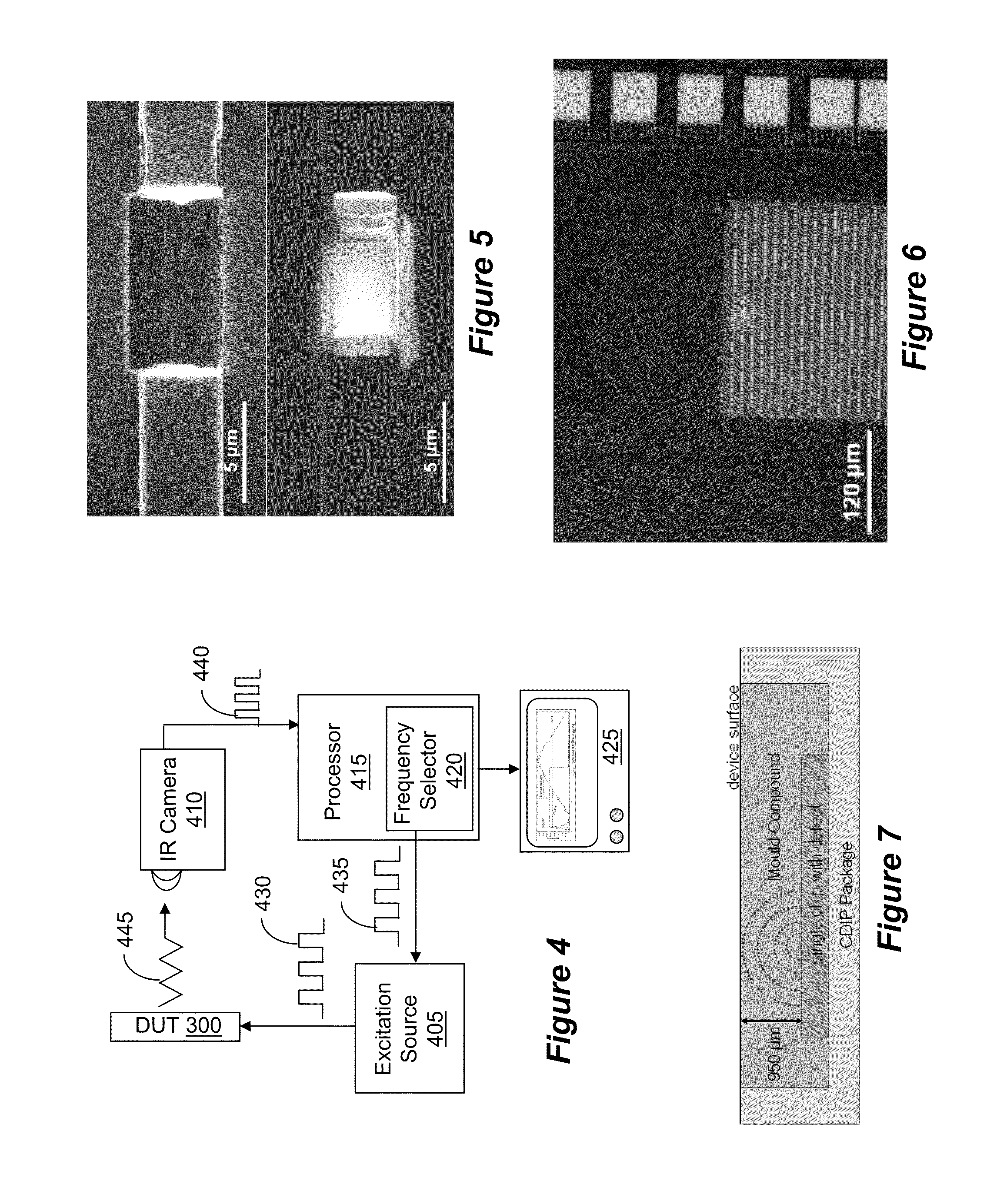Three-dimensional hot spot localization
a hot spot and three-dimensional technology, applied in the field of three-dimensional hot spot localization, can solve the problems of increasing challenges in failure analysis of modern complex systems in package devices with a three-dimensional architecture, limited access to and analysis of internal electronic structures or interconnects, and both methods are limited in resolution, so as to and improve depth resolution and measurement reliability.
- Summary
- Abstract
- Description
- Claims
- Application Information
AI Technical Summary
Benefits of technology
Problems solved by technology
Method used
Image
Examples
example i
Hot Spot Depth Determination at Single Chip Devices
[0054]The method of LIT can be used to non-destructively determine the hot spot position inside of a fully packaged single chip device providing a better alignment for the following physical failure analysis steps. The relationship between hot spot depth, applied lock-in frequency and resulting phase shift was investigated using test structures with defined point heat sources. The test structures were made using single chip device containing a meander of copper lines. The meander was locally modified by Focused Ion Beam technique (FIB), as shown in the upper part of FIG. 5 to generate well-defined local heat sources. After the creation of the local high resistance area the single chip device was measured by LIT with a supply voltage of 1.2 V and a lock-in frequency of 5 Hz creating a local heat source with a dissipation power of 14 mW. The resulting amplitude overlaid with the topography image is shown in FIG. 6. As a next step, the...
example ii
Defect Depth Determination at Stacked Die Devices
[0060]For 3D hot spot localization inside of stacked die integrated devices, e.g., a system-in-package, a second factor of influence has to be regarded. Thermal waves generated at the hot spot position have to propagate through different material layers, e.g., silicon, mould compound, die attach tape, etc., each having different thicknesses. As a consequence, depending on the axial hot spot position at different dies of the defective device, not only the distance to the device surface but also the thermal diffusion length is changing. Therefore, thermal waves generated at hot spots at lower dies inside of the stack have to pass additional material layers compared to thermal waves generated at hot spots which are close to the device surface. Like in the previous section regarding single chip devices, this behavior can be used for the determination of the hot spot depth by calculating the theoretical phase shift over a certain frequency...
example iii
Time-Resolved Thermal Response
[0066]One disadvantage of traditional phase vs. frequency method is the long analysis time required. Measuring the phase across a full DUT with sufficient SNR may take several minutes (up to hours for high lock-in frequencies at thick, low-power samples). FIGS. 11A & 11B show a typical lock-in results, measured at flock-in=1 Hz and Vlock-in=1.2V with time of acquisition=15 minutes, with 11A being the amplitude result / image as an overlay on top of a topography image which is the basis for the localization of such a defect in x & y. FIG. 11B is the phase results, representing the local thermal delay per pixel. Since the x,y localization of a heat-source can be obtained from 11A, the final 3D analysis is reduced to the determination of the z-depth of the heat-source which only requires the phase value, measured right on top of the targeted heat-source. Therefore, taking measurement of the entire field of view, as shown in FIG. 11B for all required lock-in ...
PUM
 Login to View More
Login to View More Abstract
Description
Claims
Application Information
 Login to View More
Login to View More - R&D
- Intellectual Property
- Life Sciences
- Materials
- Tech Scout
- Unparalleled Data Quality
- Higher Quality Content
- 60% Fewer Hallucinations
Browse by: Latest US Patents, China's latest patents, Technical Efficacy Thesaurus, Application Domain, Technology Topic, Popular Technical Reports.
© 2025 PatSnap. All rights reserved.Legal|Privacy policy|Modern Slavery Act Transparency Statement|Sitemap|About US| Contact US: help@patsnap.com



